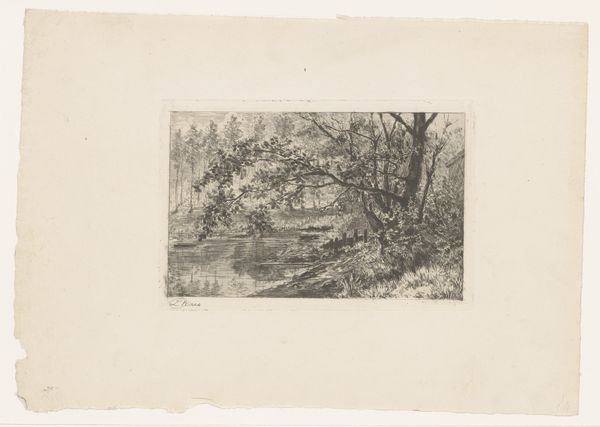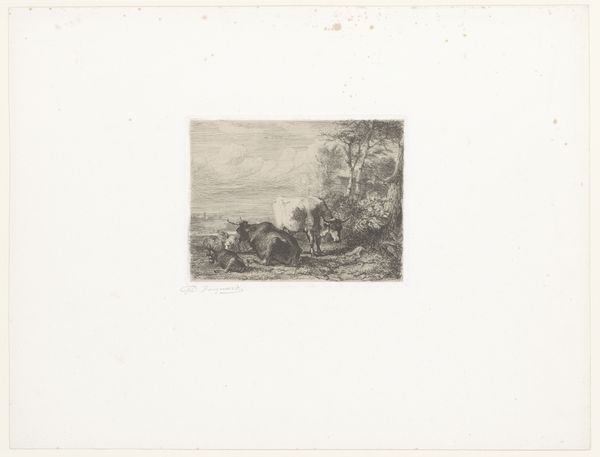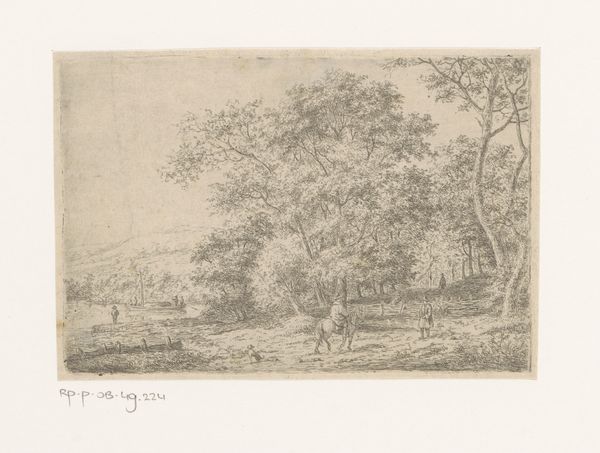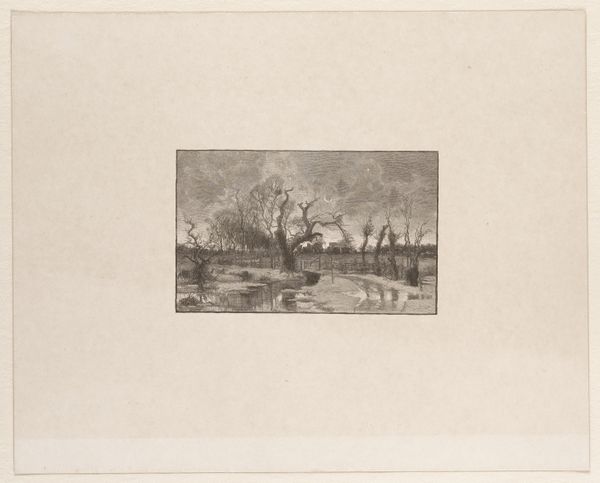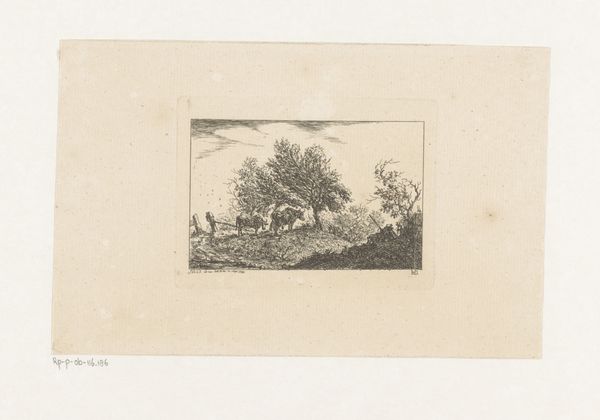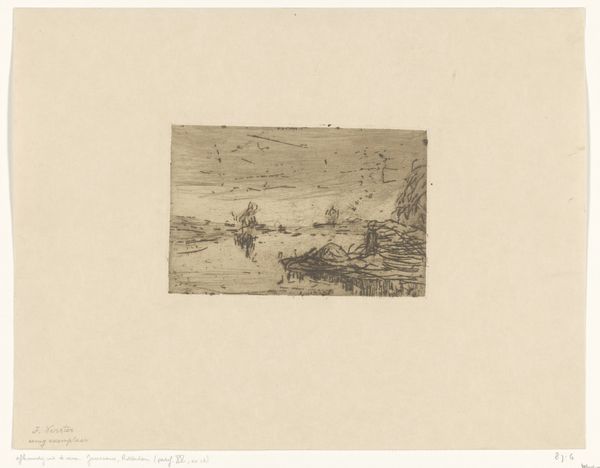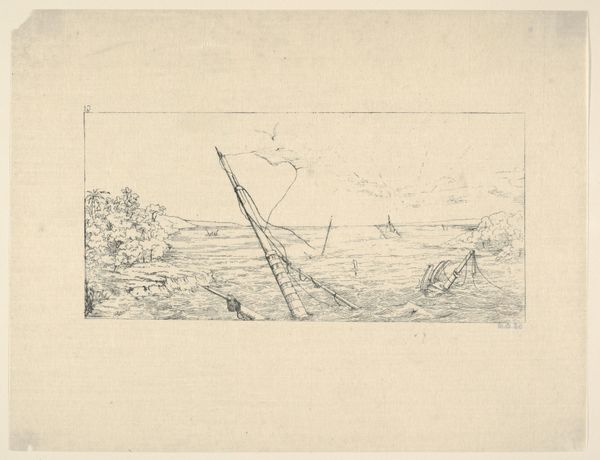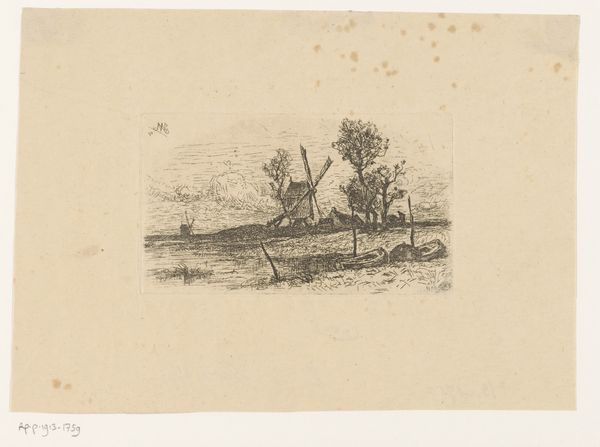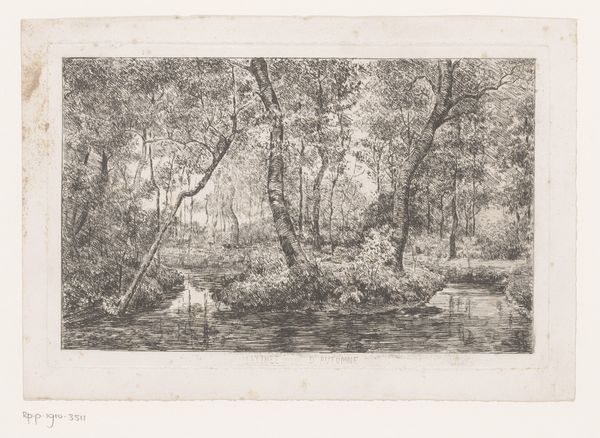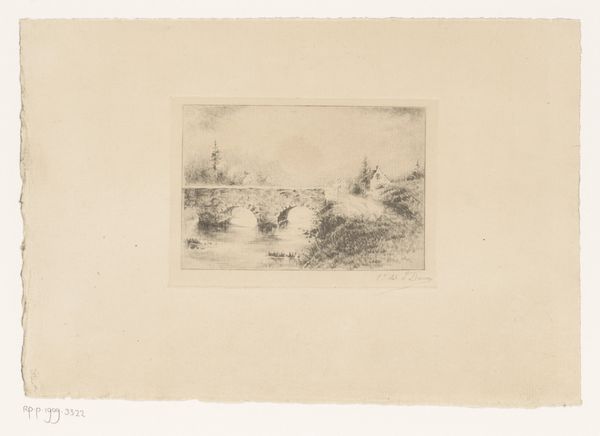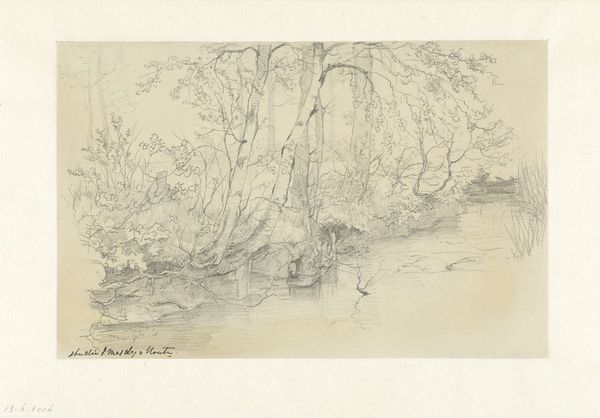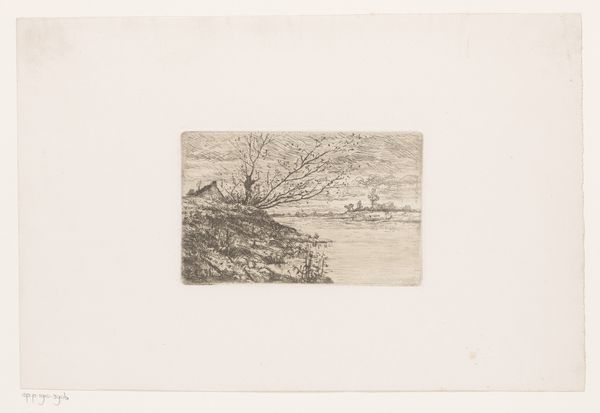
print, etching
# print
#
etching
#
landscape
#
realism
Dimensions: height 86 mm, width 224 mm
Copyright: Rijks Museum: Open Domain
Curator: Ah, let me draw your attention to this small etching titled "Landschap met boot aan de oever," or "Landscape with boat on the shore," attributed to Arnoud Schaepkens, likely created sometime between 1831 and 1904. Editor: Immediately, I’m struck by its intimacy. The monochrome gives it this faded memory feel, like looking at an old photograph from someone else’s life. There's something melancholic in the soft, diffused light. Curator: Indeed. Schaepkens has used the etching technique to create a landscape that is both detailed and evocative. Notice how the reflections in the water add depth, blurring the line between reality and a mirrored image. Do you notice the cultural cues that the symbols evoke? Editor: Yes! I can really appreciate that. There's a boat tucked in on the shore – barely there in the rendering - whispering of journeys, both literal and metaphorical, perhaps the transience of life reflected on that water’s surface. Water carries so much symbolic weight across cultures, right? Purification, passage… Curator: Precisely. The way the trees frame the scene, those stoic sentinels on the bank, anchors the ephemeral nature of water. They stand as witnesses to this quiet drama. It seems he really rooted himself into realism! Editor: Agreed, but that realism feels imbued with something deeper. Perhaps Schaepkens is touching upon a yearning for simpler times, for harmony with nature that, even then, felt distant. Curator: A harmonious note struck in ink, wouldn’t you say? What starts with black is, in this moment, full of life, light, reflection, emotion and an odd peace. Editor: It’s a beautiful reminder that grand stories aren't the only ones worth telling. Sometimes, the smallest whispers carry the greatest weight.
Comments
No comments
Be the first to comment and join the conversation on the ultimate creative platform.

